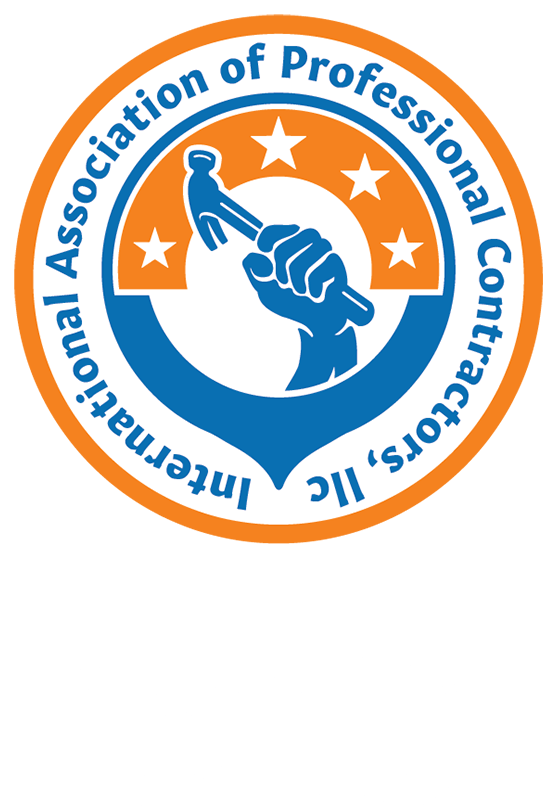What happens when your phone rings? How is your phone answered? It needs to be answered quickly and properly, every time. “Catch” the call. You should have instant access to your calendar every time your phone rings so that you can book an appointment. Your prospect will judge your business based on their interactions with you over the phone.
Remember to smile while talking on the phone; it’s a fact that an upbeat facial expression can be transmitted through one’s voice and speech. Regardless of how hectic or stressful your day is, do not convey this to your caller. And under no circumstances should you make disparaging remarks to them about anyone else you deal with, whether it’s an over-billing subcontractor, a late office staffer, or (the kiss of death!) another client, regardless that any of your complaints about them may be justified. While you want to engage your prospect using a sense of trust, he or she is not your confidant. If you drop absentminded little tidbits about the everyday incidents on the job that are annoying or a recent source of tension for you, your caller will doubt your leadership and ability to take their project to the finish line on time and under budget. Don’t use negative conversation as a way to establish a business relationship. Leave the cares and concerns about your other projects and company issues outside the realm of your interactions with your prospect. Focus only on them and what they want.
To that end, minimize workplace distractions. If you’re on the road when a sales call comes in, pull over and take the call. If you’re in a noisy area of your office, close the door or window, or find a quieter place to take the call. If your caller believes that they’re phoning at an inconvenient time and you do nothing to mitigate it, they will feel less valued as a customer and may reconsider hiring you. They want someone who can give them the undivided attention they believe they deserve, because they do.
Ending a phone call effectively includes summarizing the call. Say, “Mrs. Smith, I have you scheduled for our appointment on Tuesday, May 5th at 11 a.m. Is that right?” Wait for your client’s acknowledgement. This recap will help reduce errors in scheduling.
Before ending the phone conversation, ask your client if there is anything else that your company can do. Give your name again: “My name is Mary. If there’s anything else we can do for you, or if your schedule changes, feel free to call me. Until then, Joe will see you on Tuesday. “
At the Tone, Hang UP and Call My Competitor
You’ve probably done a lot of marketing to get your phone to ring. Don’t let it all go to waste. Convert every call into a scheduled appointment. Make sure someone who can convert or sell is actually answering your business phone. If your potential customers are reaching voicemail, an answering service, or an untrained employee or spouse, you are probably not converting many of them into appointments.
Many contractors refuse to allow their cell phone to interrupt them on the jobsite. This is a mistake. The client you’re performing work for is already sold. His/her money is in the bank. The prospect calling you is new money. Get that new money.
The Red Phone
All contractors should have a dedicated phone number—and even a dedicated phone—that’s used only for new business. In fact, this dedicated phone should be red in color (which you can easily make by using a basic colored cell phone cover). An actual red phone is your instant reminder that there is no phone call that you’ll answer all day that’s more important than a call for new business. This red phone should have the phone number you would list in any and all advertising that’s designed to acquire new clients, such as emails and newsletters to new potential customers, print ads, truck signage, yard signs, billboards and direct mail.
You can use a different “main” number for suppliers, in your contracts, and for general business use. That way, you or your staff can man the red phone and leave the other phone number to be used primarily for everyday, routine business. The red phone should always be manned because it means new business, and you should never let new business slip away under any circumstances.
If you’re a one-person operation, be sure to ask your clients whether they’d mind if you took calls during your meeting with them; most of them won’t object if you ask in advance. Let your everyday phone calls go to voicemail if you’re busy, but always answer your red phone. Prospective clients won’t be interested in leaving you a voicemail; they’ll just move on to the next contractor. If you carry both phones with you out in the field, make sure your everyday phone is turned off during meetings. Make both your phones’ ringtones different so that you know which phone is ringing, alerting you to pick up any red phone calls. Again, if you’re meeting with a client, ask for permission to answer your phone during the meeting. Your client’s confidence in you will increase if s/he sees that you are in demand from other consumers trying to hire you.
TIP: Think of a phone call the way a football receiver thinks of a pass and try to “catch the call.
Toll-Free Numbers
Avoid using toll-free numbers. Unless you’re a national company, you’ll only be working locally, so why offer the illusion that you’re saving your prospective clients any money with a simple phone call? Besides, customers will choose the local contractor with the local area code. They want to talk to the actual contractor who’ll be working for them. A toll-free number implies an impersonal, non-local corporation that will send someone out whom the client won’t get to speak to beforehand. A few very cheap customers appreciate toll-free numbers to save a few pennies. Let your competitors have those customers.
Vanity Numbers
Don’t use alpha-numeric phone numbers, such as “1-800-CONTRACTOR,” unless you also display the numbers in parentheses after it. No one enjoys having to decipher a clever vanity number.
The one exception to this rule is the phone number you have on a vehicle sign. You may have only an instant to make an impression, so a word as the phone number (or partial phone number) is actually easier for others to remember.
After Hours
If you accept new business calls after hours, keep your red phone on and your other phones off. One way to prevent website visitors from hesitating to call you after hours is to add something along the lines of the following sentence under your red phone’s phone number: “Please don’t call after 9:30 p.m.” Many consumers are on your website in the evening and this sentence will let them know that it’s OK to call you at 8:15 p.m. It also implies that they will get YOU—the contractor, in person.
Receptionist’s Flowchart
Whoever answers the phone better be a polite, efficient, natural-born salesperson. Your receptionist is more important than anyone else in your company. Your receptionist is on the front line of the battle.
Create a flowchart for your receptionist that helps him/her respond appropriately, reminds him/her to emphasize certain points with the caller, and to collect certain information from the caller. The flowchart can be referred to each time a call veers off into unexpected territory. Your receptionist should alert you every time s/he is unsure of how to respond to a caller who takes the conversation in a different direction so that the flowchart can be updated.
TIP: Have someone call your company regularly and secretly brief you on their experience. Did a live person answer your phone? How many rings did it take before the call was answered? Did the receptionist ask for the caller’s contact information?
On Hold
It is now fairly inexpensive to adopt a phone system with custom “on-hold” advertising for your company. You can even do the voice work yourself using the microphone on your laptop. Your message could tell your caller about your company and the services you offer. An on-hold message can greatly increase a caller’s patience by answering routine questions in advance of their actual conversation with you so they won’t feel that their time is being wasted while being on hold.
Listen to Your Game
Using an inexpensive digital voice recorder or a phone jack and mini-recorder plugged into your landline, listen to both the way you answer the phone and the way you interact with potential customers during a sales visit. (Before you “tap” your own phone, check with your state’s laws about recording your phone conversations, as it is illegal in some states.)
Listen for:
- your general tone of voice. Are you friendly and cheerful, or are you stressed and anxious?
- your enunciation and the clarity of your speech. Are you speaking too quickly or too low, or are you relaxed and articulate?
- your willingness to listen without interrupting—this is especially important in conversations that you want to end in a sale;
- whether you respond appropriately, such as by voicing conversational cues to signal that you’re actively listening, and by repeating back what your client says to you; and
- your close. Did you actually ask for an appointment or the job?
TIP: Ask your friends and family members to listen to some of the recordings and have them comment on what they hear.
You Can’t Sell Unless You Get an Appointment
Some price shoppers don’t think it’s necessary for you to meet with them. They think you can give them a price over the phone. You have to get an appointment to sell these types of prospects. So, ask questions about the property, the system, or the component that the prospect probably can’t answer.
Try something like this:
“I can probably help you over the phone if can tell me…. And is it currently….?
As soon as the prospect admits s/he doesn’t know the answer to one of your questions, respond with:
“Oh, then, I’m going to have to come over and look at it before I can help you. When would be a convenient time for me to come over?”
Work Every Lead to Death.
A lead is a terrible thing to waste. When you leave a lead unclosed, it’s like leaving money unclaimed. The lead you worked hard to acquire, which you then pursued with an appointment could be waiting for one more nudge. Don’t give up on any lead.
TIP: If you are too busy to work a lead, give it to a competitor you trust, and ask him/her to return the favor.
Before the Appointment
Before you go on an appointment to provide an estimate, first perform some basic online research about the property and potential customer. You can find out the price of the home, the location and what kind of area it is, whether your prospect is a professional or has made the news or is a philanthropist and civic activist, etc., etc. Anything you find doing ten minutes of research of the public record can help you get a feel for the prospect. If you discover that you have something in common with him, this information can be a great ice-breaker to help establish rapport. Plus, your prospect will realize that you’ve done your homework and have come to the appointment prepared to secure his project. That’s what winners do, and it’s a tactic that impresses other winners.
TIP: You can also do similar online research on the property address.
Call the Prospect to Confirm
Before you leave for the appointment, call the prospect and let them know you are on your way. This will reduce no-shows.
TIP: Read this article on Meeting a Prospect for the First Time.
Join our discussion on how contractors can convert incoming calls into sales appointments.
ContractorsAssociation.org


